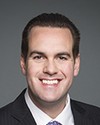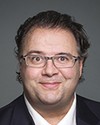I want to continue on this, because I am very interested.
Thank you so much for your testimony this morning, all of you, because it's really clarified in our minds what is a very blurry field in communications: the distinction between paid advertising, government communications, information, and education.
To continue on the subject that Mr. Weir brought up about the disability tax credit, that's an excellent example of what you were speaking about, Ms. Fox, that there need to be complementary channels. Certainly, I think that paid advertising, well placed, is critical to bringing people's attention to a program that exists, and it's something the private sector knows how to do very well. As members of the government and public service we want to get the program out and into the right hands, and it behooves us to do that.
I would like to suggest something specific to that if I can help with your considerations. As a social worker I was working in a medical environment. I was dismayed to see how little medical and social service professionals knew about income support programs that could greatly help their patients. There's another channel: specialized targeted advertising to professionals working in those fields, that would be complementary. I can think of a whole host of programs, like the Canada learning bond which I spoke about earlier.
In getting back to the matter at hand, I would ask the ASC, how many ads have you rejected out of hand? I don't recall if that question was asked.




